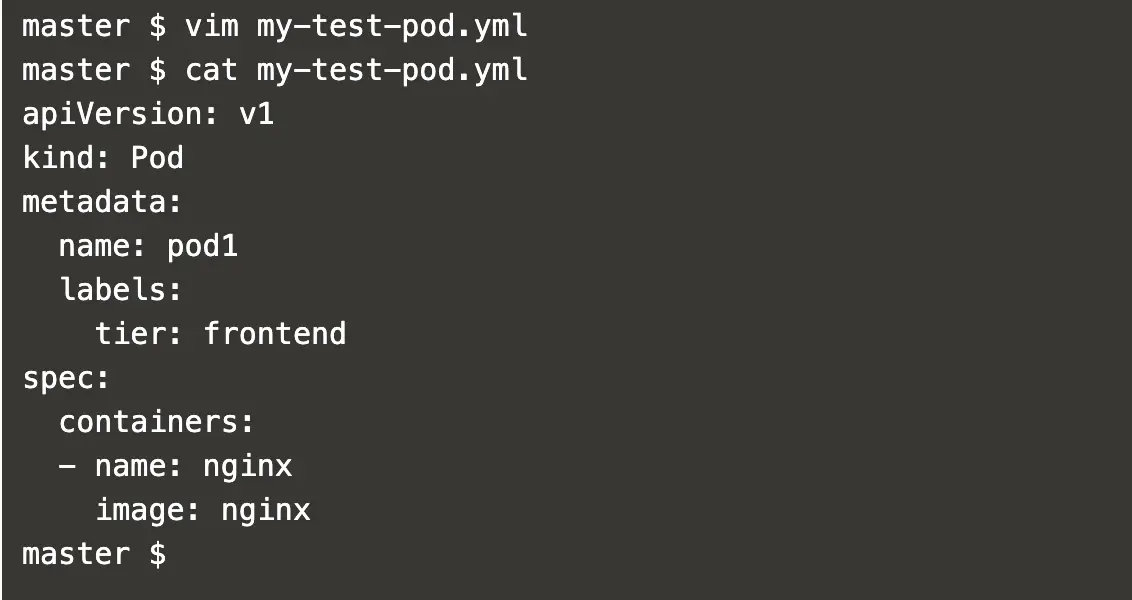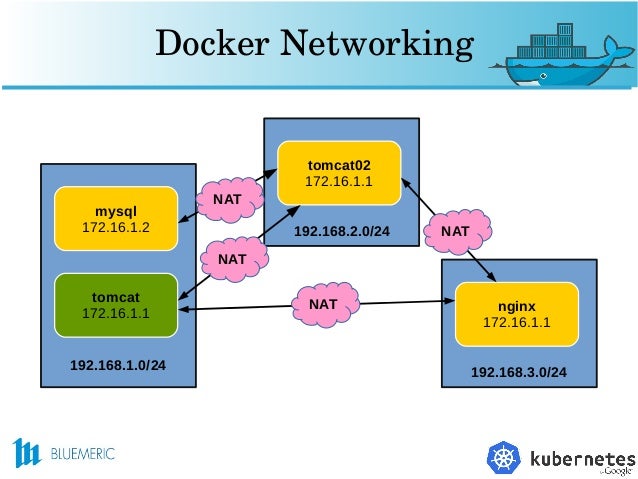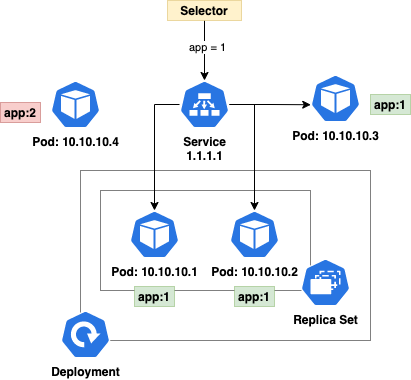42 labels and selectors in kubernetes
en.wikipedia.org › wiki › KubernetesKubernetes - Wikipedia Just like labels, field selectors also let one select Kubernetes resources. Unlike labels, the selection is based on the attribute values inherent to the resource being selected, rather than user-defined categorization. metadata.name and metadata.namespace are field selectors that will be present on all Kubernetes objects. Other selectors that ... technos.medium.com › node-selectors-in-kubernetesNode Selectors in Kubernetes. nodeSelector is the simplest ... Jan 15, 2022 · To achieve this goal, Kubernetes provides 2 methods: NodeSelector; Node Affinity; Let’s Discuss NodeSelector: nodeSelector is the simplest form of node selection. It is a field PodSpec and specifies a map of key-value pairs. For the Pod to be eligible to run on a node, the node must have the key-value pairs as labels attached to them.
Labels and Selectors in Kubernetes - HowtoForge To get Pods matching a label of our choice, we can "--selector" in the command as follows. kubectl get pods --selector environment=test kubectl get pods --selector app=nginx We can also use "-l" instead of "--selector" to get the Pods matching the label of our choice. kubectl get pods -l environment=test kubectl get pods -l environment=prod

Labels and selectors in kubernetes
How does Selector Works in Kubernetes? - EDUCBA 1. Label Selector. We apply labels to the Kubernetes objects to organize or select a group of objects. Labels can be attached at creation time or added and modified at any time. Labels are case sensitive. We can use Label Selector using the option '-l'. Let's create three pods with labels "env: prod" and "app: nginx-web" and two ... kubernetes.io › docs › conceptsAssigning Pods to Nodes | Kubernetes Jun 24, 2022 · Pods are namespaced objects in Kubernetes, so Pod labels also implicitly have namespaces. Any label selectors for Pod labels should specify the namespaces in which Kubernetes should look for those labels. You express the topology domain (X) using a topologyKey, which is the key for the node label that the system uses to denote the domain. › kubernetes › kubernetesKubernetes - Labels & Selectors - tutorialspoint.com Labels selector are core grouping primitive in Kubernetes. They are used by the users to select a set of objects. Kubernetes API currently supports two type of selectors − Equality-based selectors Set-based selectors Equality-based Selectors They allow filtering by key and value. Matching objects should satisfy all the specified labels.
Labels and selectors in kubernetes. Kubernetes Labels & Selectors - Kubernetes - Wisdom Jobs Selectors. Labels do not offer individuality. In overall, we can say numerous objects can carry the same labels. Labels selector are core grouping primitive in Kubernetes. They are used by the users to choose a set of objects. Kubernetes API currently supports two type of selectors −. Equality-based selectors; Set-based selectors; Equality ... Civo Academy - Learn about pod labels and selectors - Civo.com In this video, we'll be discussing labels and selectors. Now, labels in Kubernetes are a set of key-value pairs attached to a Kubernetes object such as pods. It is basically used to provide attributes to create a meaningful Kubernetes object. So, the command to view the labels is kubectl get pods --show-labels. Labeling a pod kubernetes.io › working-with-objects › common-labelsRecommended Labels | Kubernetes Jan 11, 2022 · You can visualize and manage Kubernetes objects with more tools than kubectl and the dashboard. A common set of labels allows tools to work interoperably, describing objects in a common manner that all tools can understand. In addition to supporting tooling, the recommended labels describe applications in a way that can be queried. The metadata is organized around the concept of an application ... What is the difference between Label and Selector in kubernetes? Via a label selector, the client/user can identify a set of objects. The label selector is the core grouping primitive in Kubernetes. In a nutshell label selectors depend on labels to select a group of resources such as pods. For example a deployment selects a group of pods by a label selector in the deployment spec. Share
6. Labels, annotations, selectors — Kubernetes Tasks 0.1 documentation Create service (only routable inside cluster). The service is assigned Cluster IP (DNS record is automatically created) which load-balance across all of the pods that are identified by the selector. $ kubectl expose deployment app1-prod. Kubernetes labels, selectors & annotations with examples Labels give us another level of categorization, which becomes very helpful in terms of everyday operations and management. Labels are attached to Kubernetes objects and are simple key: value pairs. You will see them on pods, replication controllers, replica sets, services, and so on. Kubernetes Core Concepts - Labels, Selectors and Annotations What are Selectors in Kubernetes? Selectors are used to filter out objects based on their assigned Labels. Labels and Selectors goes hand in hand. For example Selectors will help us filter out objects like give all the application pods which are of type staging. Example syntax to define Selectors The Guide to Kubernetes Labels Kubernetes provides two ways of selecting objects with labels: equality and set-based selectors. Equality : You can select objects which are equal or not equal to one or more label values. You can have multiple selectors separated by commas, and all conditions must be met for a resource to match this selector.
Using K8s Label Selectors in Go without doing it wrong The labels.Selector interface is located in the apimachinery repo under pkg/labels/selector.go. It's used to read and query Kubernetes Objects via their labels. You should use it because: It... Labels | Kubernetes Platform - Kube by Example kubectl get pods --selector owner=michael. The --selector option can be abbreviated to -l, so selecting pods that are labelled with env=development can also be done using: kubectl get pods -l env=development. Oftentimes, Kubernetes objects support set-based selectors. Let's launch another pod that has two labels (env=production and owner=michael): Working with labels and selectors | Kubernetes Cookbook - Packt Working with labels and selectors Labels are a set of key/value pairs, which are attached to object metadata. We could use labels to select, organize, and group objects, such as Pods, ReplicaSets, and Services. Understanding Labels, Selectors and Annotations in Kubernetes There are two kinds of selectors. Equality-based and Set-based selectors. Equality-based requirement Equality based selectors help you filter resources equal to a certain key and value. You would following operators for equality based-requirements: = == != Example # this command would give us all resources with the env =prod label
Filtering Kubernetes Resources using Labels, Annotations, and Selectors ... Selectors are used to identify objects tagged with particular labels in Kubernetes. You can use selectors to group the relevant resources. For example, you can use selectors to map the pods that share the same label for a service. For more information, see the official Kubernetes documentation on Labels and Selectors .
Labels and Selectors - Kubernetes - GitLab Label selectors. Unlike names and UIDs, labels do not provide uniqueness. In general, we expect many objects to carry the same label(s). Via a label selector, the client/user can identify a set of objects. The label selector is the core grouping primitive in Kubernetes. The API currently supports two types of selectors: equality-based and set ...
Using Kubernetes Annotations, Labels, and Selectors Annotations, labels, and selectors are used to manage metadata attached to your Kubernetes objects. Annotations and labels define the data while selectors provide a way to query it. Here are the differences between the three concepts, what they're designed for, and how you can use them to manage your resources. Annotations
Labels and Selectors in Kubernetes - YouTube In this video I talked about what are labels, selectors and annotations in the case of Kubernetes.I talked in detail about the equality based and set based r...
A Kubernetes Guide for Labels and Selectors | Datree.io Labels can be used by both Kubernetes and homo-sapiens to organize and to select subsets of objects. When dealing with Kubernetes config files, labels are always added under the "metadata" section of the manifest. Labels vs annotations Annotations are also key-value pairs that are attached to objects and are used to describe Kubernetes resources.
Labels and Selectors in Kubernetes | ANOTE.DEV Labels and Selectors are a standard method to group things together. Labels are key/value pairs that are attached to objects, such as pods. Labels are intended to be used to specify identifying attributes of objects that are meaningful and relevant to users but do not directly imply semantics to the core system.
Labels and Selectors - Kubernetes The label selector is the core grouping primitive in Kubernetes. The API currently supports two types of selectors: equality-based and set-based . A label selector can be made of multiple requirements which are comma-separated. In the case of multiple requirements, all must be satisfied so the comma separator acts as a logical AND ( &&) operator.
kubernetes.io › working-with-objects › labelsLabels and Selectors | Kubernetes Jul 01, 2021 · Labels are key/value pairs that are attached to objects, such as pods. Labels are intended to be used to specify identifying attributes of objects that are meaningful and relevant to users, but do not directly imply semantics to the core system. Labels can be used to organize and to select subsets of objects. Labels can be attached to objects at creation time and subsequently added and ...







Post a Comment for "42 labels and selectors in kubernetes"